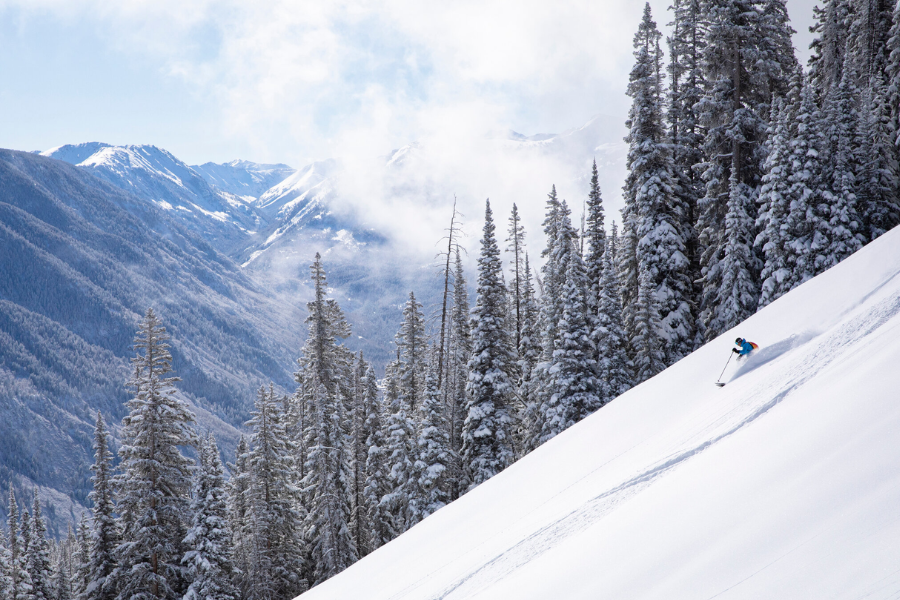Bad News For a Ski Resort Nyt: The Impact of Climate Change on Winter Tourism
A recent report from The New York Times (NYT) highlights a significant issue affecting ski resorts across the United States: a staggering eighty-two percent have experienced a marked decline in snowfall over the past decade. This decline poses serious challenges for ski resorts and regions dependent on winter tourism, as climate change continues to escalate.
The NYT’s report serves as a stark warning for the future of the ski industry. It underscores the urgent need for ski resorts to adapt by implementing environmentally friendly practices to cope with diminishing snowfall, environmental threats, and the broader impacts of climate change. Both ski enthusiasts and industry leaders are increasingly concerned about the viability of ski resorts and the long-term sustainability of winter tourism.
Climate Change Impact on Ski Resorts
The ski industry, once a cornerstone of winter recreation and a driver of economic growth, now faces unprecedented challenges. Rising global temperatures are making it increasingly difficult for ski resorts to maintain their operations. The reality of decreasing snowfall is a harsh blow to an industry that thrives on winter weather.
Declining Snowfall: A Harsh Reality
Ski resorts in the United States have reported a significant drop in snowfall, disrupting the traditional ski season and jeopardizing the industry’s future. As climate change progresses and the planet warms, this issue is expected to intensify, forcing ski resorts to seek innovative solutions to remain operational.
Environmental Threats to Winter Tourism
Climate change affects ski resorts in various ways beyond just snowfall. Extreme weather events, unpredictable precipitation patterns, and habitat degradation pose substantial threats. These challenges can lead to shorter ski seasons, reduced visitor numbers, and increased operational costs for resorts.
| Environmental Threat | Impact on Ski Resorts |
| Declining Snowfall | Shortened ski seasons, reduced visitor numbers, increased reliance on artificial snowmaking |
| Extreme Weather Events | Damage to infrastructure, disruption of operations, safety concerns for visitors |
| Habitat Degradation | Loss of natural landscapes, reduced appeal for eco-conscious tourists, increased environmental impact |
The ski industry is grappling with multiple challenges due to climate change. Ski resorts must develop innovative strategies to sustain winter tourism and adapt to the evolving climate landscape.
Bad News for a Ski Resort: The NYT Report
A prominent ski resort is facing significant hurdles, as reported by The New York Times. The article delves into the various challenges the resort is encountering, reflecting a broader trend impacting winter tourism destinations nationwide.
The NYT article discusses how the resort is combating climate change. Struggling with decreased snowfall and shorter ski seasons, the resort is investing in snowmaking technologies and diversifying its offerings to include new activities. However, these measures come at a considerable financial cost.
Furthermore, the article addresses environmental concerns, highlighting issues such as water scarcity and increased energy consumption. As a result, ski resorts are compelled to reassess their sustainability efforts.
The bleak news from the ski resort, as highlighted in the NYT report, indicates that these challenges are widespread. Ski destinations across the country are confronting similar difficulties, emphasizing the urgent need for innovative solutions to maintain winter tourism.
| Key Challenges Facing the Ski Resort | Potential Impacts |
| Declining Snowfall and Shorter Ski Seasons | Reduced revenue, job losses, and economic strain on the local community |
| Increased Energy Consumption and Water Scarcity | Higher operating costs, environmental concerns, and regulatory pressure |
| Diversifying Activities and Investing in Snowmaking | Significant financial investments, with uncertain returns |
The NYT report is a rallying call for the ski industry. Resorts must discover ways to become sustainable, financially viable, and responsive to the needs of the local community. As winter tourism evolves, adaptation and innovation are crucial for the survival of ski resorts.
Adapting Ski Resorts for Sustainability
In response to the growing threat of climate change, ski resorts are taking significant steps toward sustainability. They are adopting green technologies and initiating new projects to ensure the future of skiing and snowboarding.
Green Initiatives for Ski Areas
Ski resorts are embracing environmentally friendly practices to minimize their carbon footprint. By harnessing solar and wind energy, they can power their operations more sustainably, significantly reducing greenhouse gas emissions.
Additionally, resorts are prioritizing water conservation efforts. Many are implementing water-efficient snowmaking systems and recycling water to ensure a reliable snow supply while minimizing waste.
| Initiative | Description | Benefits |
| Renewable Energy | Installation of solar and wind power systems to power resort operations | Reduced carbon footprint, sustainable energy source |
| Water Conservation | Water-efficient snowmaking systems and water recycling programs | Conserve water resources, ensure reliable snow supply |
| Waste Management | Comprehensive recycling and composting programs, reduction of single-use plastics | Reduce waste, promote a circular economy |
Ski resorts are also addressing waste management by increasing recycling initiatives and reducing plastic usage, thereby moving towards a cleaner future.
By adopting green practices, ski resorts can demonstrate their commitment to environmental stewardship. These initiatives are essential in the collective effort to promote sustainable living and preserve the ski industry for future generations.
Economic Impact of Low Snowfall
The economic ramifications of declining snowfall are profound for ski resorts and the broader winter tourism industry. The closure of ski resorts significantly impacts local economies that rely heavily on winter visitors, as these areas are often dependent on tourist revenue.
When ski resorts shut down due to insufficient snow, the consequences extend beyond the resorts themselves. Hotels, restaurants, retail stores, and other services that cater to skiers and snowboarders experience a downturn in business, further straining local economies.
| Economic Metric | Impact of Ski Resort Closures |
| Job Losses | Thousands of seasonal and year-round jobs in the affected areas |
| Revenue Decline | Significant drop in revenue for the ski resort and related businesses |
| Local Tax Revenues | Decreased tax collections for municipalities and states relying on winter tourism |
The effects of diminished snowfall also resonate beyond ski resorts, leading to reduced spending on skiing, snowboarding, and related winter sports. This decline poses additional challenges for local businesses striving to remain viable.
As climate change alters snowfall patterns, ski resorts and winter tourism must adapt to ensure the continued viability of their businesses and communities.
Conclusion
The ski industry is confronting substantial challenges due to climate change and associated environmental threats. For ski resorts to thrive in the long term, adaptation is essential. The decline in snowfall and rising temperatures have adversely affected winter tourism, making it imperative for ski resorts to adopt sustainable practices.
By implementing environmentally friendly strategies, such as energy-efficient snowmaking and offering year-round activities, ski resorts can significantly reduce their carbon footprints. This proactive approach is vital for remaining relevant in an evolving climate landscape. The ski industry must act decisively to safeguard winter sports and the communities reliant on them.
The success of transitioning ski resorts to sustainability hinges on collaboration among industry leaders, policymakers, and the community. By collectively addressing climate change, we can preserve the magic of winter for generations to come.
Stay updated with the latest news and notifications timescycle





